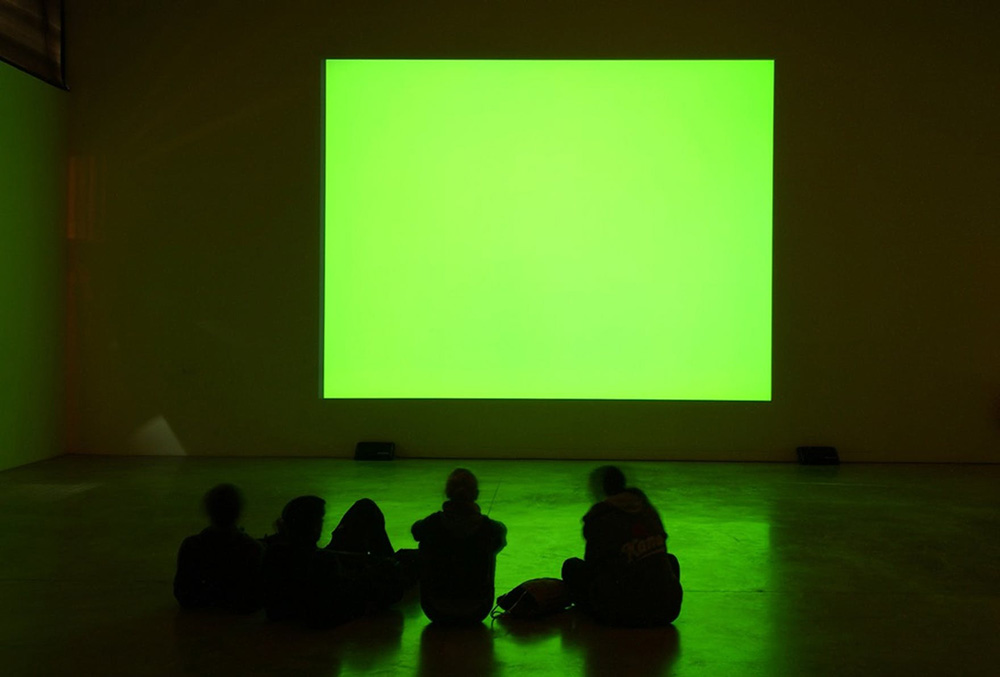ART-PRESENTATION: Sanguine Bloedrood
 In the context of cultural city festival “Antwerp Baroque 2018. Rubens inspires” that pays tribute to Peter Paul Rubens and his baroque cultural legacy. Curated by Luc Tuymans, the exhibition “Sanguine/Bloedrood” is constructed as a dialogue between key Baroque works and works by modern and contemporary Artists. Tuymans, deliberately chose not to set up the exhibition as an art-historical, canonical overview, but according to his own interpretation.
In the context of cultural city festival “Antwerp Baroque 2018. Rubens inspires” that pays tribute to Peter Paul Rubens and his baroque cultural legacy. Curated by Luc Tuymans, the exhibition “Sanguine/Bloedrood” is constructed as a dialogue between key Baroque works and works by modern and contemporary Artists. Tuymans, deliberately chose not to set up the exhibition as an art-historical, canonical overview, but according to his own interpretation.
By Dimitris Lempesis
Photo: M HKA Archive
The exhibition “Sanguine/Bloedrood” is a visually opulent and challenging exhibition that brings old masters into the experimental spaces of contemporary art. In the first place, the exhibition seeks to explore the tension between various masterpieces from the baroque period and contemporary masters, in an attempt to bridge the gap between old and contemporary art. Both time periods evoke a sense of overwhelmingness, but also of recognizability. The key work in the exhibition is “Five Car Stud” (1969-72) by Edward & Nancy Kienholz, in a unique and one-time location: in a dome tent on the Gedempte Zuiderdokken, that was part of the port of Antwerp, at first there were three: the coal dock , the skippers dock and the stone dock . Today they are muted and they are used as a parking lot. In “Five Car Stud” Kienholz addresses the enduring violence, prejudice, and racism in America during the Civil Rights era and its aftermath. This life-sized multimedia installation depicts a group of white men attacking a black man who lies prostrate on the ground, arms pinned to his sides, as one of his attackers tries to castrate him. Surrounded by four cars and a pickup truck that illuminate the scene with their headlights, white men wearing grotesque masks are posed standing, crouching, and grappling with the black man at the center of the installation. The black figure has a double face: an internal face in wax expressing sadness and resignation, and a transparent external face that displays a monstrous grimace of terror and rage. The torso, however, is built out of an oil pan inside of which six letters float, which might form the word “nigger.” According to Kienholz, the black man had been singled out by the group of white men for having a drink with a white woman, who cowers in one of the automobiles, vomiting. Nightmarish and emotionally disturbing, the work was intended to jolt the viewer with its graphic intensity, forcing the audience to come face to face with the brutal reality of the African-American experience. The work was defined by Kienholz as the representation of the “Burden of being an American”. The work was created by Edward Kienholz from 1969 to 1972, and first exhibited at Documenta 5 in Kassel, is considered one of the American artist’s most significant works. Despite the controversy and attention that it earned from critics right from its debut, the work remained hidden from view in the storage of a Japanese collector for almost 40 years. The artwork was only presented twice again to the public, today the work is part of the Prada Collection. Inspired by old photographs of WWI battlefields, Berlinde De Bruyckere’s installation “In Flanders’ Fields” (2000) consists of five life-size casts of horses, completely covered by horsehide, manes included. They lie on the ground or balance on cinched supports. Their positions, lying stretched out on the ground, amplifies the sculpture’s dramatic force. The horses, victims of the war, have lost all their natural strength and perfection. What remains is tragic, bereft of hope. In his works, Jan Vercruysse regularly employs recognizable shapes or objects and the associations these objects carry with them. He based “M (M1)” (1992) on the physical appearance of a piano. However, this ‘piano’, constructed with plaster, glass and wood, has lost its function as musical instrument: the object is physically present, but lacks its fundamental property. Only silence remains. With M (M1), Vercruysse reflects on silence, and on the emptiness that silence entails.
On presentation are works by: John Armleder, Carla Arocha & Stéphane Schraenen, Fred Bervoets, Michaël Borremans, Mike Bouchet, Adriaen Brouwer, Caravaggio, Berlinde De Bruyckere, Thierry De Cordier, Cornelis De Vos, Francisco de Zurbarán, Lili Dujourie, Marlene Dumas, Zhang Enli, Jan Fabre, Lucio Fontana, Marcel Gautherot, Isa Genzken, Joris Ghekiere, Franciscus Gijsbrechts, Pierre Huyghe, Jonathan Johnson, Jacob Jordaens, On Kawara, Edward & Nancy Kienholz, Jukka Korkeila, Dominik Lejman, Takashi Murakami, Nadia Naveau, Bruce Nauman, Johann Georg Pinsel, Sigmar Polke, Tobias Rehberger, Peter Paul Rubens, Yutaka Sone, Henri Storck, Piotr Tolmachov, Pascale Marthine Tayou, Javier Téllez, David Gheron Tretiakoff, Dennis Tyfus, Anthony van Dyck, Jan Van Imschoot, Jan Vercruysse and Jack Whitten.
Info: Curator: Luc Tuymans, M HKA (Museum of Modern Art Antwerp), Leuvenstraat 32, Antwerp, Duration: 1/6-16/9/18, Days & Hours: Mon-Wed & Fri-Sun 11:00-18:00, Thu 11:00-21:00, www.muhka.be











